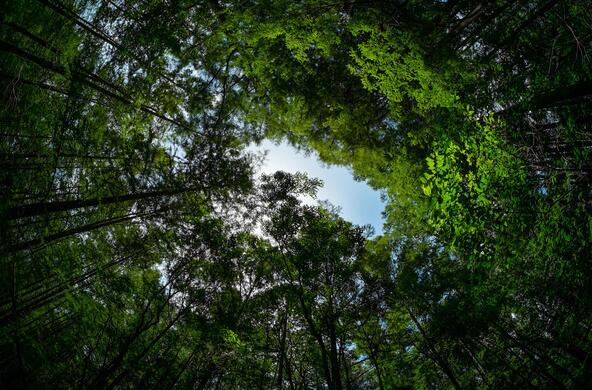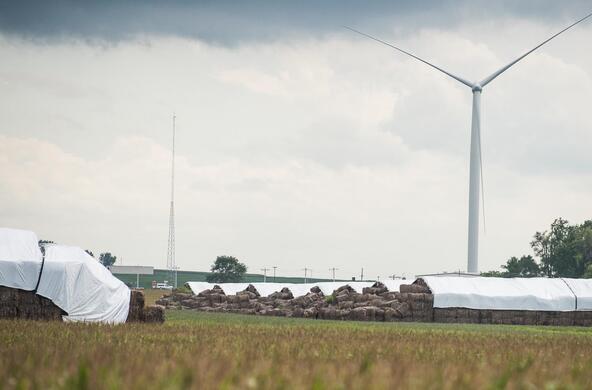I suppose it should be of no great surprise that the recent furor to curb the use of fossil fuels has spawned the idea that trees—firewood—are a form of renewable energy. After all, trees regrow, removing carbon dioxide from the atmosphere, and people were burning trees long before we saw any rise in the concentration of greenhouse gases in the atmosphere. We switched from firewood to coal, not because we ran out of trees, but because coal has so much more energy per unit weight than wood. We have used fossil fuels with such enthusiasm that the uptake of CO2 by trees and the oceans has not been able to keep up with emissions.
Of course, the problem is that when we burn a tree, all the carbon that it has accumulated is immediately returned to the atmosphere (as CO2), whereas the regrowth of trees can take 100 years or more. That means that when we burn harvested wood, we create a “carbon debt,” which must be repaid over decades, just at the time when we are most concerned about adding carbon dioxide to the atmosphere. Thus, promotion of the use of woody biomass as a substitute for coal, particularly in electric-utility power plants, is not helpful to mitigating global climate change. Moreover, you need to burn a lot of wood, it is difficult to ship, and it has its own ancillary contributions to air pollution.
My alma mater, Dartmouth College, has developed a proposal to replace its oil-burning central heating plant with a plant burning woody biomass. Now, I am all in favor of weaning society from the use of fossil fuels, but the wood-fired plant is very likely to increase the emissions of carbon dioxide to the atmosphere over its entire lifetime of operation. The College may save some money by using wood rather than fuel oil, but we need a better plan if the College wants to claim that it has reduced its footprint on the Earth’s climate. The costs of a biomass-energy plant should not be compared to the oil-fired powerplant, but to the costs of various alternatives that are now or soon to be available to the marketplace.
Proponents of burning woody biomass, including corporations like Enviva that produce wood pellets, are quick to point out that even in the Southeast, there is a greater area of forests than several decades ago. Recent studies show that despite relatively stable forest biomass in the Southeast, there has been a 27% decline in the uptake of CO2 by existing forests, largely due to harvest. Nearly all of the harvest goes into short-lived products, including wood pellets; only about 16% is incorporated into long-life products (houses and furniture) that might store carbon for significant periods of time.
Trees are the most efficient net-negative emissions technology that we know of. They remove CO2 from the air and store it in wood for long periods of time. Young forests are particularly efficient at uptake, but net uptake is seen in older forests as well. And, when we burn any forest, we reverse the fruits of its efforts, by putting CO2 back into the atmosphere, where it can affect the global climate for decades to come.
References
DeCicco, J. and W.H. Schlesinger. 2018. Reconsidering bioenergy given the urgency of climate protection. Proceedings of the National Academy of Sciences 115: 9642-9645.
Gu, H., C.A. Williams, N. Hasler and Y. Zhou. 2019. The carbon balance of the southeastern U.S. forest sector as driven by recent disturbance trends. Journal of Geophysical Research, Biogeosciences doi: 10.1029/2018JG004841.
Johnston, C.M.T. and V.C. Radeloff. 2019. Global mitigation potential of carbon stored in harvested wood products. Proceedings of the National Academy of Sciences 116: 14526-14531.
Law, B.E., T. W. Hudiburg, L.T. Berner, J.J. Kent, P.C. Buotte, and M.E. Harmon. 2018. Land use strategies to mitigate climate change in carbon dense temperate forests. Proceedings o f the National Academy of Sciences doi/10.1073/pnas.1720064115
Moomaw, W.R., S. A. Masino and E. K. Faison. 2019. Intact Forests in the United States: Proforestation Mitigates Climate Change and Serves the Greatest Good. Frontiers in Forests and Global Change doi: 10.3389/ffgc.2019.00027.
Schlesinger, W.H. 2018. Are wood pellets a green fuel? Science 359
Sterman, J., l. Siegel, and J.N. Rooney-Varga. 2018. Does replacing coal with wood lower CO2 emissions? Environmental Research Letters Vol. 13, No. 1 (2018): 015007.






